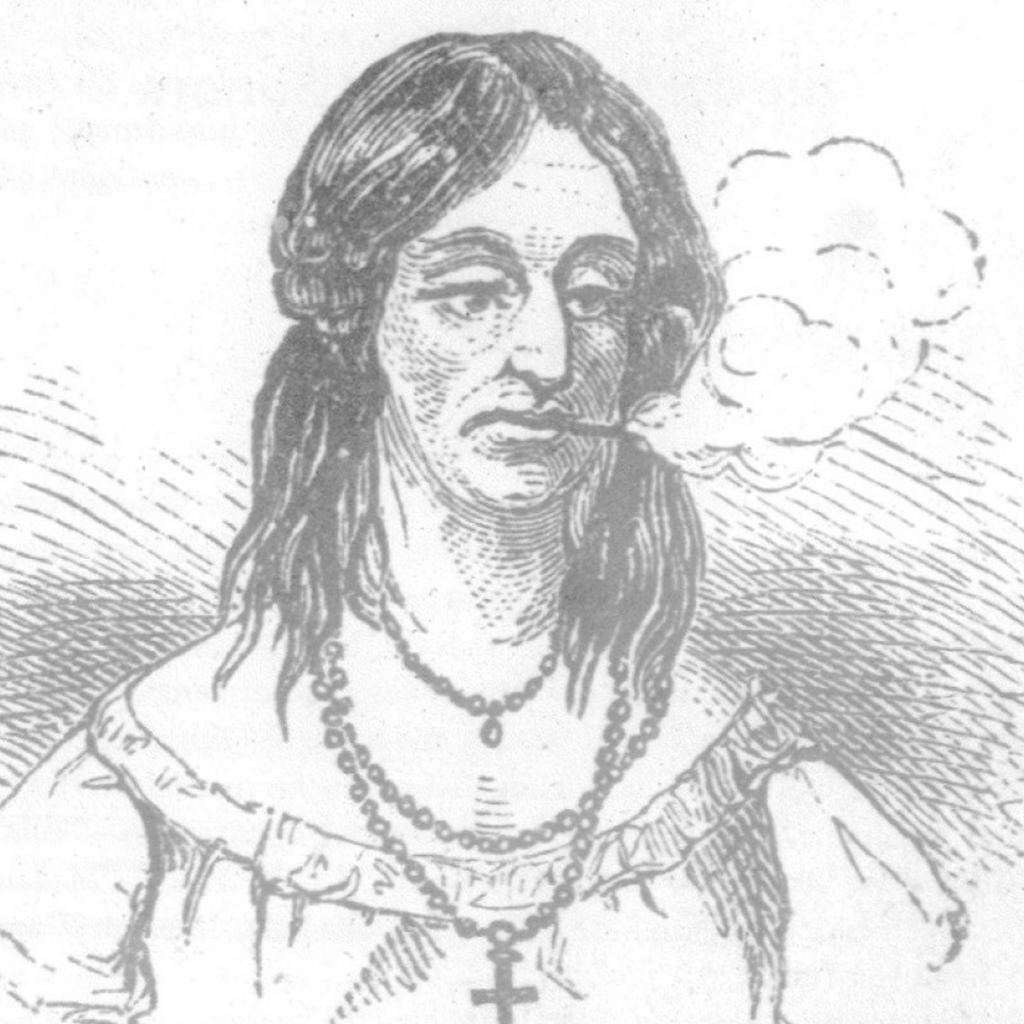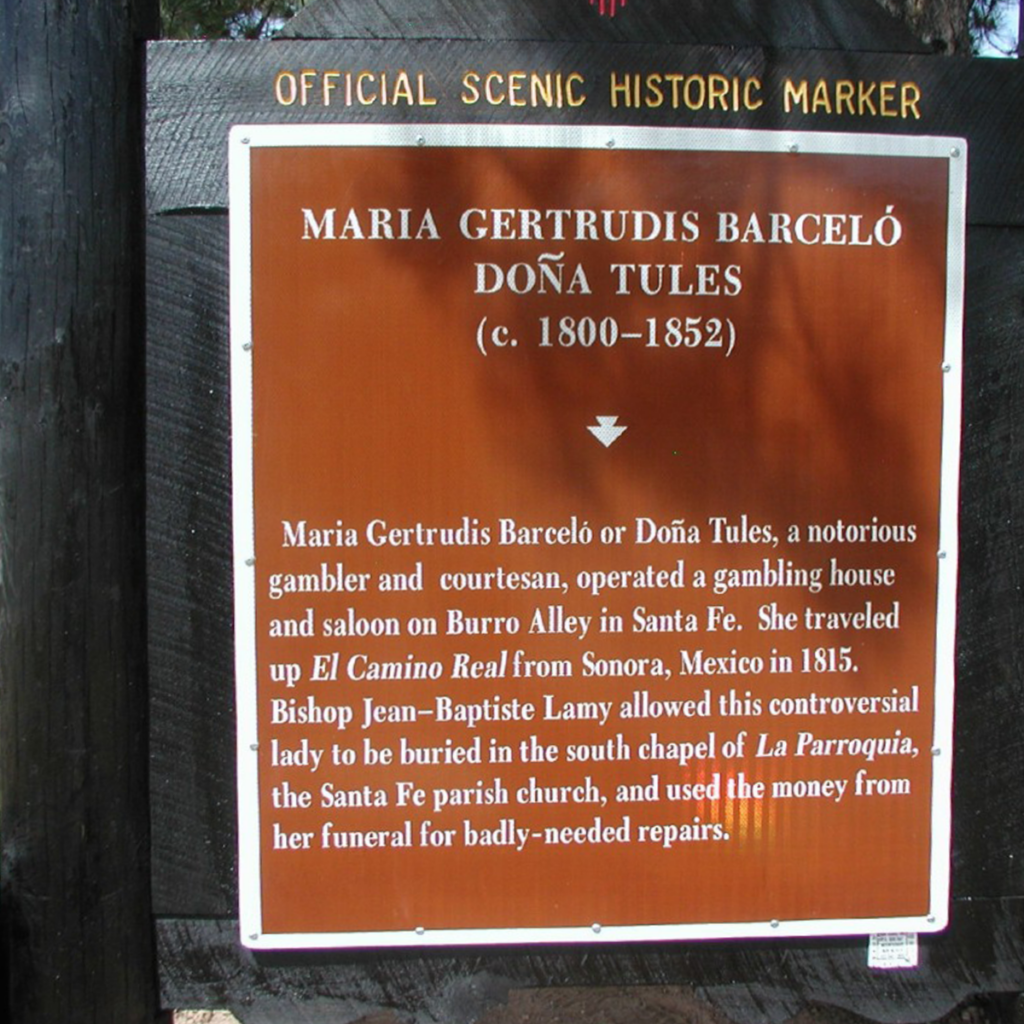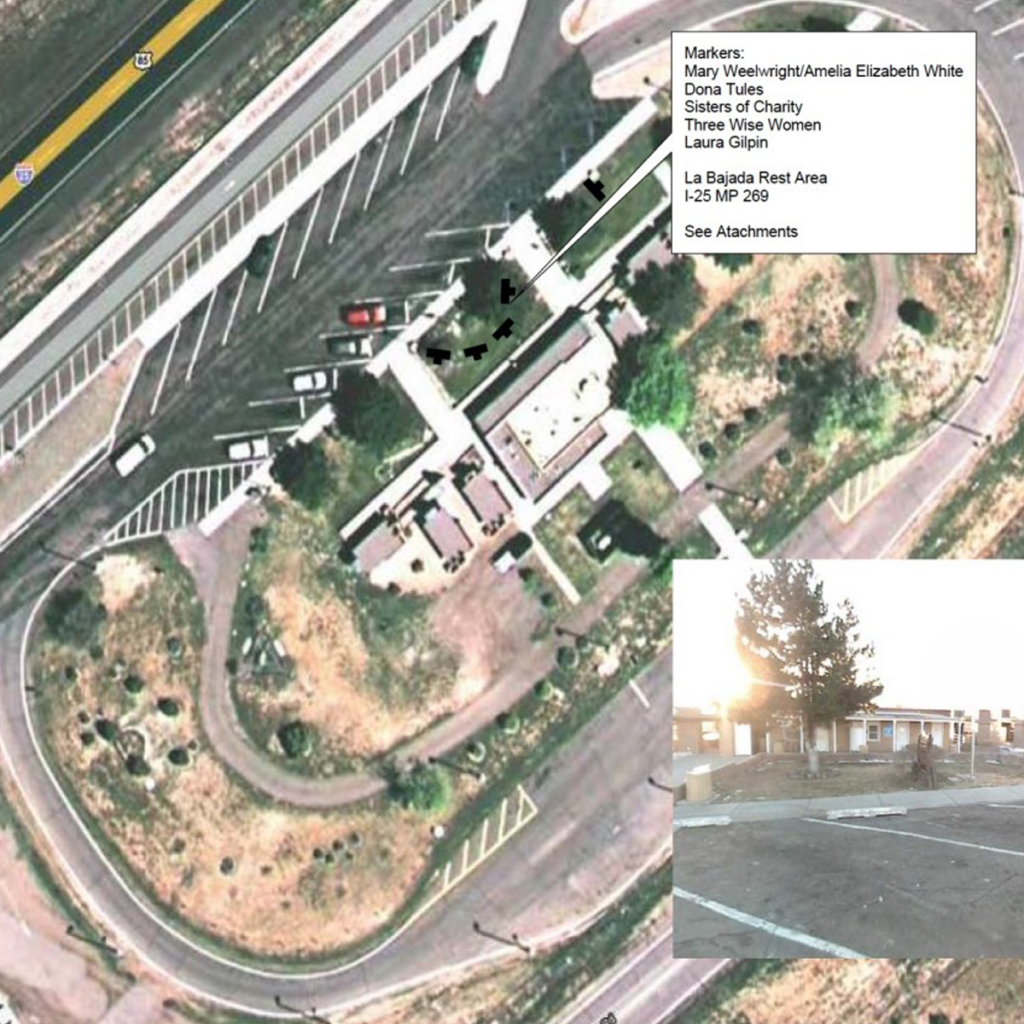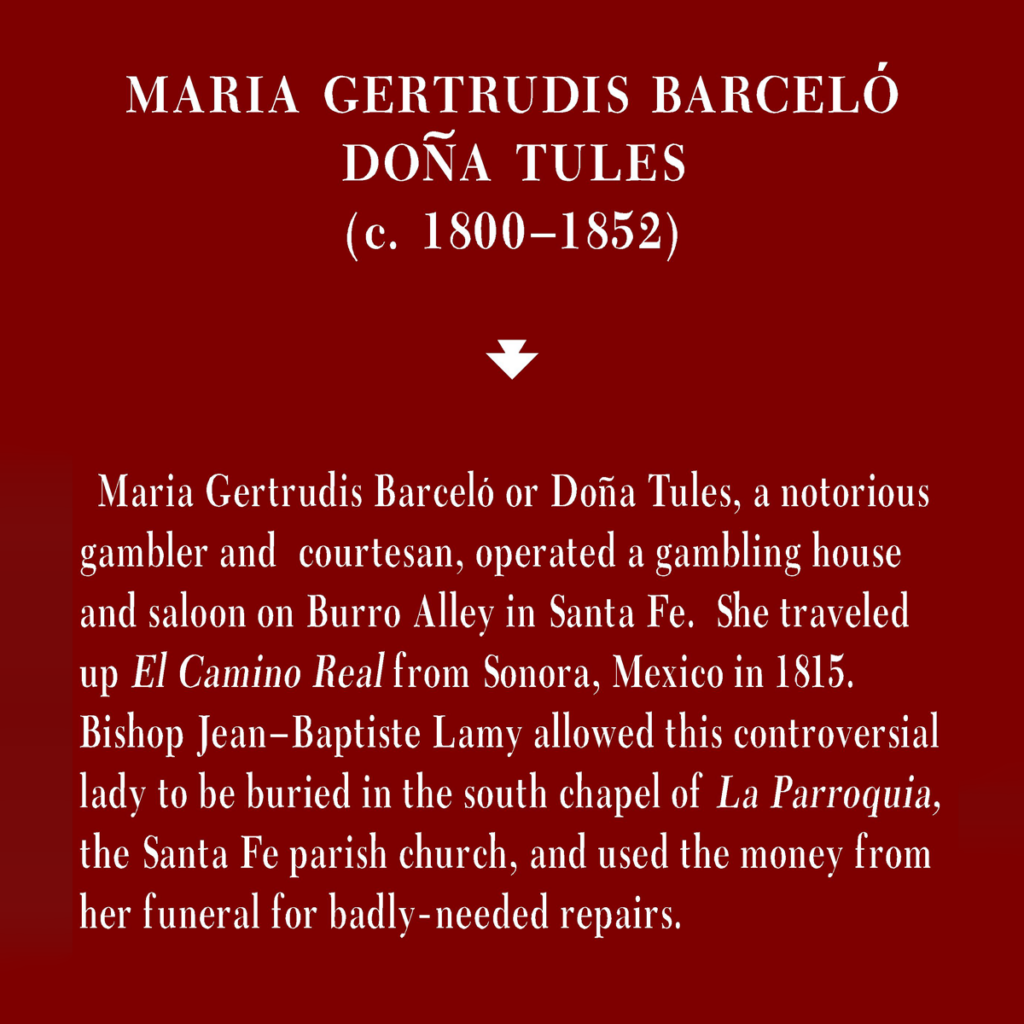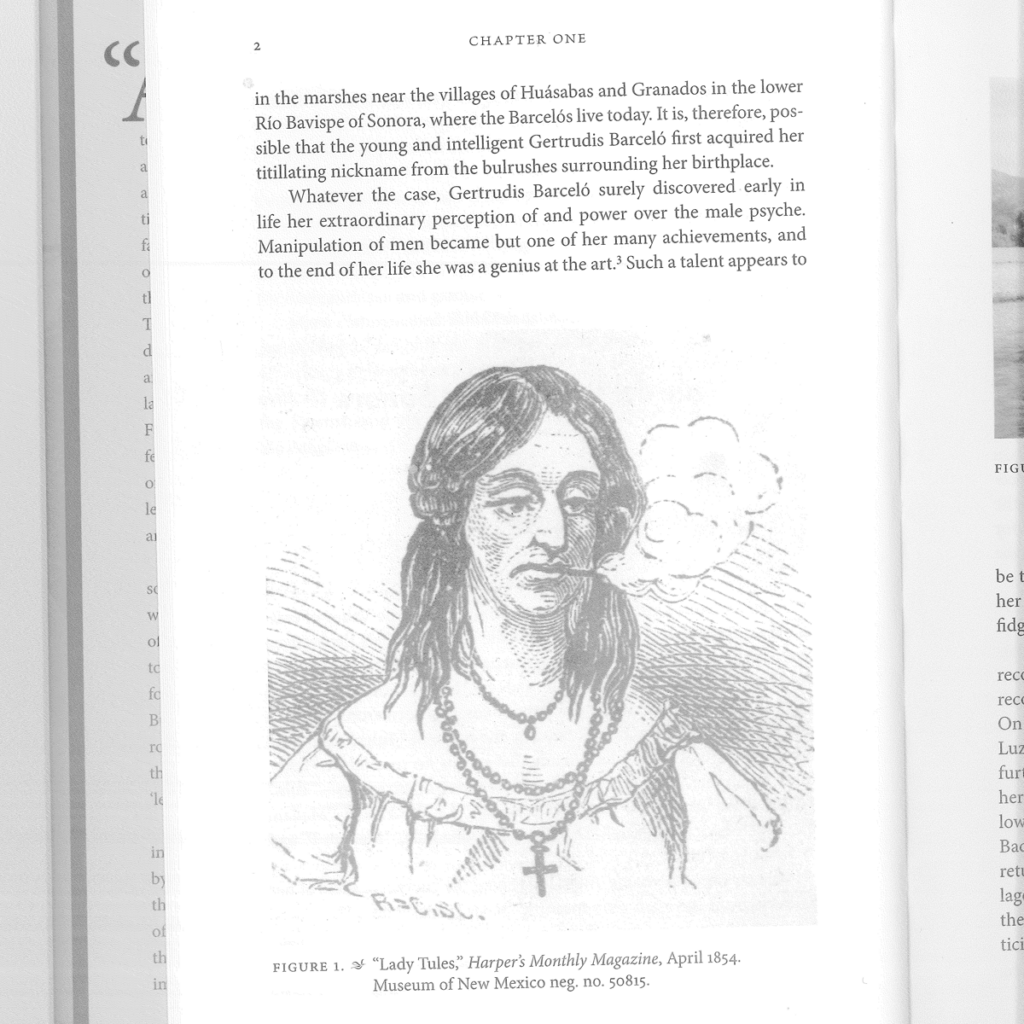María Gertrudis Barceló
Maria Gertrudis Barcelo “Doña Tules”
1800 - 1852
Santa Fe County
After making the difficult journey up El Camino Real from Mexico, she amassed great wealth and notoriety through real estate, most notably her gambling house and saloon on Burro Alley near Santa Fe Plaza. Multiple depictions secure her position as one of the most infamous women in New Mexico history.
María Gertrudis Barceló, known as “Doña Tules,” was one of the most infamous women in New Mexico history. Her opulent gambling house and saloon on Burro Alley in the heart of Santa Fe was known far and wide, as were her skills as a gambler.
Born in the Bavispe Valley of Sonora, Mexico, to Dolores Herrero and Juan Ignacio Barceló, she had a sister and a brother. Among her many names, including her given name, María Gertrudis, she was best known as Tules or “reeds” in Spanish, perhaps because she was slender. She made the difficult journey up El Camino Real de Tierra Adentro in 1815 from Sonora, Mexico. Shortly after New Mexico gained independence from Spain in 1821, the Barceló family settled in Valencia, a village south of Albuquerque, where Juan Ignacio worked as a farmer and rancher.
In 1823, Tules married Manuel Antonio Sisneros, a native New Mexican. The couple had two sons, who both died as infants. Tules had a number of adopted children, including María del Refugio, a parentless child Tules and her husband baptized and adopted. Doña Tules likely began gambling around 1825. She became known as a sharp monte dealer in the mining town of Río de Dolores, a popular spot for gamblers. Like Doña Tules, her husband also had a penchant for gambling.
Sometime in the 1830s, Tules moved to Santa Fe with her husband and family. She opened her luxurious gambling house in 1839, west of the Santa Fe Plaza, at the end of the well-traveled Santa Fe Trail. It attracted Santa Fe’s elite crowd as well as Santa Fe Trail travelers. The gambling house business and a number of rental properties helped Barceló amass considerable wealth, which she used to support her adopted children, and reputedly once to assist U.S. Army officers during the Mexican-American War.
Her notoriety led to her mingling with prominent individuals. In her diary, Susan Shelby Magoffin, a Missouri woman who traveled the Santa Fe Trail, described Doña Tules as a “the principal monte-bankkeeper” in Santa Fe. Magoffin’s description of Doña Tules as “the old woman with false hair and false teeth” is less flattering. Josiah Gregg, a merchant, described her as “a woman of shady character” and a “common prostitute.” These and other portrayals have fueled the mythic image of Doña Tules.
Doña Tules died in 1852 with a will detailing the extent of her fortune. Her holdings included multiple houses. Her heirs included her sister, brother, and adopted daughters, who she vowed to support until the age of twenty or until they married. Her husband was not mentioned in the will. He disappeared after 1841 and rumors suggested that he left her and was possibly excommunicated. Bishop Jean Baptiste Lamy used money from her funeral to repair the south chapel of La Parroquia, the Santa Fe parish church where she was buried.
Sources:
Chavez, Fray Angélico. “Dona Tulas Her Fame And Funeral.” El Palacio, Vol. 57, #8 Aug. 1950.
Gregg, Josiah. Commerce of the Prairies. Vol. 1, New York: Henry G. Langley, 1844.
Magoffin, Susan. Down the Santa Fe Trail. New Haven, CT: Yale University Press 1926 reprint, pp. 120-121.
Cook, Mary J. Straw. Dona Tules: Santa Fe’s Courtesan. Albuquerque: University of New Mexico, 2007.
Druum, Stella M. Down the Santa Fe Trail and Into Mexico: The Diary of Susan Shelby Magoffin, 1846–1847. Lincoln, NB: University of Nebraska Press, 1982.
Etulain, Richard W. Beyond the Missouri: The Story of the American West. Albuquerque: University of New Mexico Press, 2006.
Foote, Cheryl J. “Stephen F. Austin and Doña Tules: A Land Agent and Gambler in the Mexican Borderlands.” In Western Lives: A Biographical History of the American West, edited by Richard Etulain, Albuquerque: University of New Mexico Press, 2004.
González, Deena J. Refusing the Favor: The Spanish-Mexican Women of Santa Fe, 1820–1880. New York: Oxford University Press, 1999.
Directions:
Maria Gertrudis Barcelo “Doña Tules”
Santa Fe County
Entrepreneur |
Mexican Period (1821 - 1848) | Territorial Period (1848 - 1912) |
North Central



